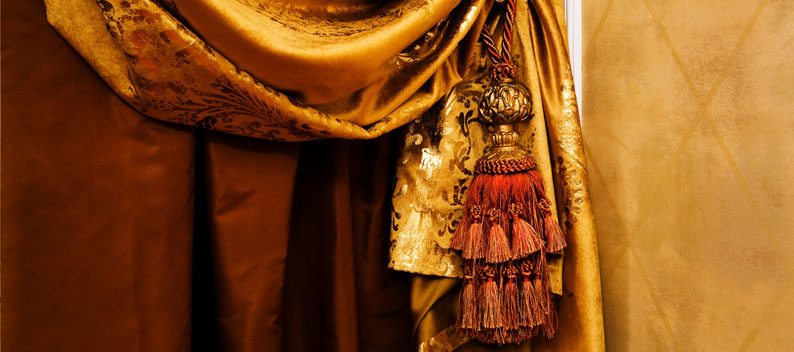Part Four: Neo-classicism
From the late 18th century onwards, neoclassicism featured strongly in interior design as it did in architecture, art and music. Some of this was due to the wealthier classes now going on Grand Tours of Italy and taking their inspiration from ancient Greece and Rome, and the trend was the considered the “true style” in its time, a reaction against the over-elaborate Baroque and Rococo fashion in favour of what was then the ‘geometrically correct’ forms and symmetry of the past.
During the Georgian period, the population of London tripled to 1.5 million, and as paraffin lighting in chandeliers and wall lights became increasingly common, so did the taste for home entertaining . For this reason, many more people began to take an interest in fashionable interiors and print books of designs and fabrics became available to the public for the first time.
In particular, the rather severe Regency style of George IV reacted against French fripperies, and instead airiness, space and light were sought after with interior colours considerably muted and featuring white, silvery grey, sage, olive, dusty rose and chocolate brown. Likewise, the heavy curved furniture legs of the Baroque era began to straighten out and were replaced by delicate wing chairs or those with hoop or shield backs.
Slimming down curtains – drapery becomes more elegant
In keeping with the trend towards more light, slender proportions and flatter details, straight, slim curtains were now the norm, offering cleaner lines and simpler pelmets which were easier to care for given the increase in window size and could contain the working of the newly introduced full cord-and-pulley system (or French rods). These could open and close curtains easily and ensured they met cleanly in the centre, and thus fussier tassels and braids began to fall out of fashion for a more ordered look.
The French rod system also meant homeowners could begin to layer muslin, curtains, cornices and valances in what became known as French drapery. This included the ‘’glass curtain’’ made of lightweight translucent materials, only now they were available as draw-sheers rather than once piece of material in a roller blind.
The British silk industry continued to flourish and wealthier homeowners opted for draperies in luxurious clouded or ribbed silk as well as satin and taffeta. However design detail became more staid, consisting of neoclassical motifs such as columns, lyres, laurel wreaths, trefoils, and rural scenes. Influences from France at the time included a taste for striped fabric interwoven with small flowers or ribbons, with an overall look of detailed delicacy overtaking the darker, gaudier garden florals of the Baroque era.
Light elegant curtains complete with decorative tails
It was the effect of the Industrial Revolution on the Britain’s textile industry, however, that made curtains begin to become more affordable for everyone, especially muslin which was extremely easy to dye and took prints extremely well. The use of steam and water power in mechanized cotton spinning as well as the power loom meant the mass production of printed cotton and textiles curtains and other soft furnishing were available. Copperplate printing also made it possible to make larger repeat patterns with improved definition on toile.
In the late 18th century, renowned architect Robert Adam, advising both the wealthy and the middle class, advocated for the integrated interior with walls, ceiling, carpet and furniture all unified in a single decorative scheme. Sheraton too designed light, elegant curtains, tied back with simple ropes, caught in rosettes topped with a cornice and valance softened with the inclusion of mini-tails and swags.
Return in two weeks for Part Five: The Victorian Era




